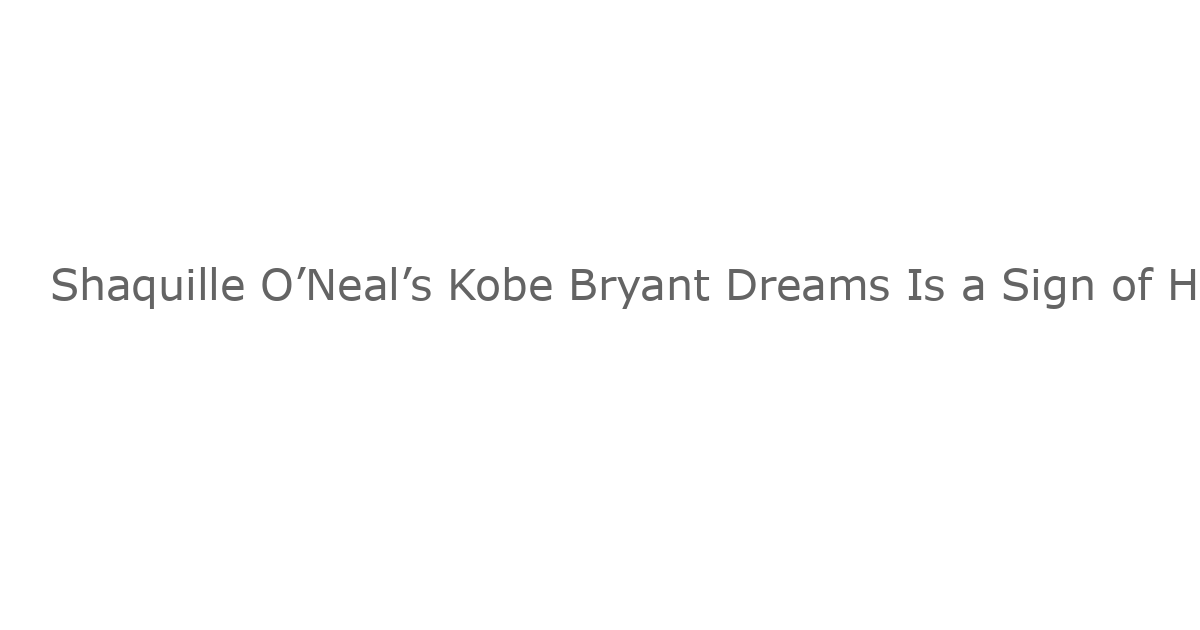Shaquille O’Neal has always been larger than life, both on the court and off, in his personality and on *Inside the NBA*. But recently, the NBA legend revealed that his nights have been quieter, with his dreams replaying the championship years in Los Angeles alongside Kobe Bryant. It’s been over five years since Bryant’s tragic passing, but for Shaq, those moments have come alive vividly, night after night. Behind these dreams lies a health struggle that nearly went unnoticed.
In a recent interview, O’Neal said, “If I lay there the first five minutes, I don’t go to sleep, then I just start dreaming, and last night I was dreaming about me and Kobe and all the championships we won. just replayed and recreated us riding in the parade and just having good times. Before I knew it, it was 9 a.m.”
He called it “dreamful attraction,” a poetic, perhaps spiritual concept. But experts call it a symptom. For years, Shaq has struggled with untreated sleep apnea, a condition that distorts the brain’s REM cycles and disrupts rest, causing hyper-real dreams. In the 53-year-old’s case, it’s nostalgia meeting physiology; memory meeting a long-ignored warning.
He admitted that he didn’t pay it much attention at first. “I was just tired all the time, and then I met this gentleman from Harvard who was a doctor, and he told me about [OSA], but I was still in my superhuman phase as I was still playing, so I didn’t pay attention.” The words hit hard. That Superman phase defined not just Shaq’s career, but his mindset at the time: he was someone who broke backboards and believed fatigue was just weakness. That mentality made him a champion, but also blinded him to his body’s signals.
After his retirement in 2011, O’Neal had slipped into poor habits: no checkups, junk food, and medicine just to get out of bed. “I’m a creature of habit: I love sandwiches. I love burgers,” he confessed. “I was eating nothing but sandwiches – for lunch, dinner, even snacks.” Then, during the pandemic, he was delivered a wake-up call from his doctor. “When someone hits you with that three-letter word that starts with D and ends with E, things change.” Things were laid bare: his kidneys were failing, and he was suffering from undiagnosed sleep apnea. Without treatment, he faced the risk of heart failure or stroke.
The diagnosis terrified him, but also saved him. “My friend, you have sleep apnea… You could die?” Shaq remembered. The moment became his reset; he lost weight, dropping from almost 415 pounds, got serious about his health, and started advocating for others to avoid the same path.
Shaq’s nightly reunions with Kobe, poignant, tender, and cinematic, are understandable on a human level: grief and nostalgia don’t respect celebrity. What his story adds for readers is a practical lesson: vivid dreams can be a symptom, not just a memory. By pairing his personal testimony with medical facts and public education, Shaq is helping destigmatize a condition that contributes to real, measurable heart and stroke risk and reminding millions that asking for help is the first, lifesaving step.

